We're often asked "which is the best island to visit in Cape Verde?"
It's impossible to give a simplistic answer to this question, as it depends a lot on the person's profile and what they want to do during a trip to the Cape Verde archipelago.
Some characteristics are common to all the islands, such as the morabeza of the Cape Verdean people (a welcoming and affable character), the spectacular coastal areas, some gastronomic traits, the relaxed profile of the people and the sun - lots of sun, all year round!
However, despite the common features, the islands are distinct from each other, both in morphology and in local habits and traditions.
Taking into account the idiosyncrasies of each island, we have created this article to help you decide where to start your Cape Verde adventure.
The following sections explain in detail which is the best island in Cape Verde for different profiles and purposes.
1. best island in Cape Verde for beach and sun lovers
Without a doubt, the best islands in Cape Verde for those looking to enjoy long white sandy beaches and clear waters are Sal and Boa Vista..
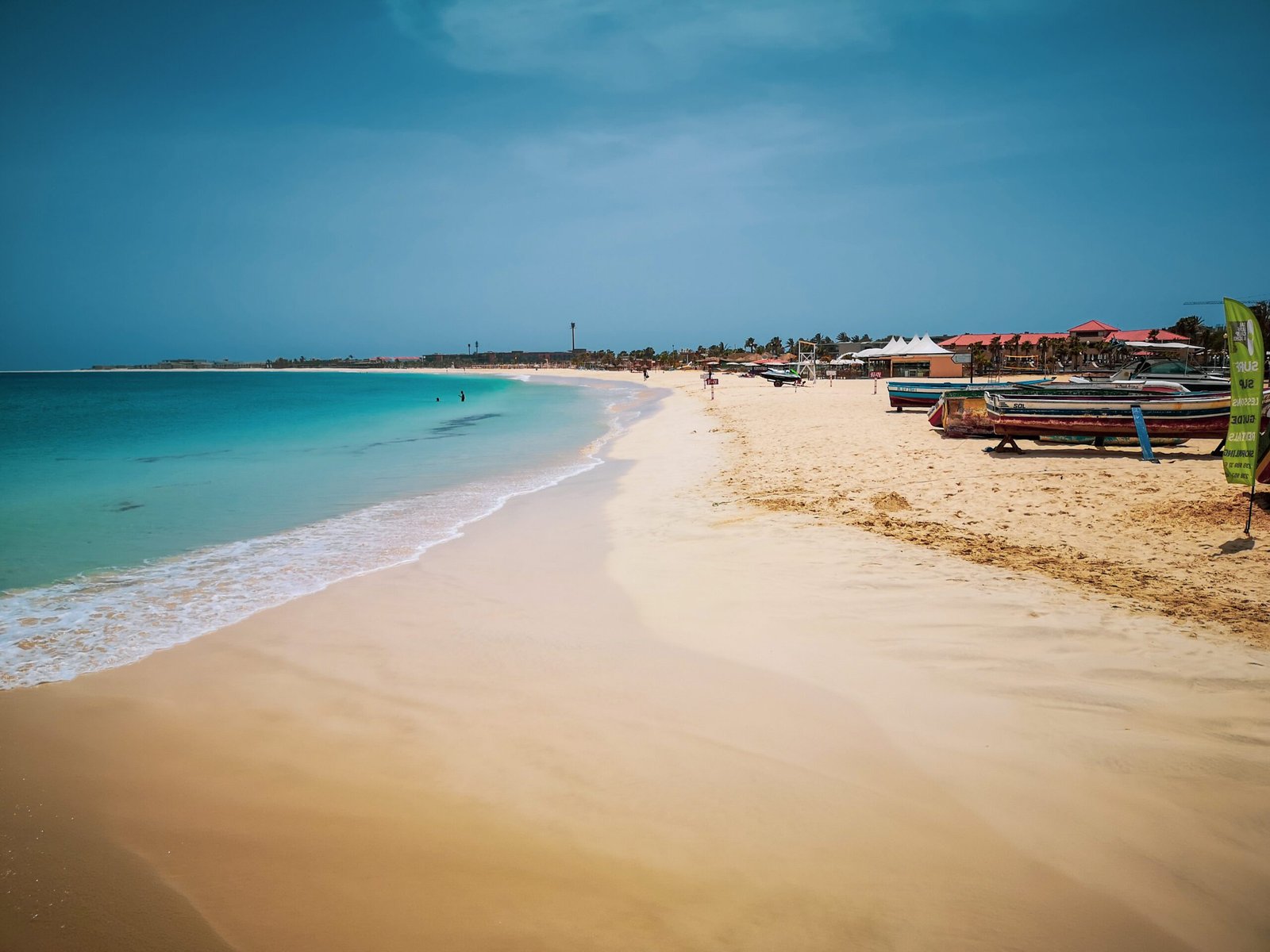
These islands are arid and have very low annual rainfall, meaning sun all year round!

Access to the islands of Sal and Boa Vista is easy, as both have international airports with direct flights from various countries in Europe and other continents.
- Sal: Amílcar Cabral International Airport (SID)
- Boa Vista: Aristides Pereira International Airport (BVC)
Connections to other islands in the country from Sal and Boa Vista are made by air and sea.
Due to the high number of tourists, the hotel infrastructure in Sal and Boa Vista is excellent, with options ranging from luxury hotels to cozy hostels and guesthouses, as well as restaurants to suit all tastes.
2. Best Cape Verde island for deserted beaches
Maio is the best island in Cape Verde for those who want beautiful beaches but wish to avoid the usual tourist spots..

Maio Island is one of the smallest in Cape Verde, with a population of just 6,330 residents. Although it’s less touristy, the island already offers good accommodation options, including hotels, guesthouses, and apartments.
Maio is also a biodiversity hotspot, making it an excellent choice for birdwatching, turtle spotting, snorkelling, diving, and other water activities.
The rural area is also worth a visit. This includes peaceful villages (Calheta, Morro, Morrinho, Figueira da Horta, Pilão Cão, Ribeira de Dom João, Alcatraz, Barreiro, etc.), some of the most charming little churches in the archipelago, and the Northern Maio Natural Park, the largest forested area in Cape Verde.
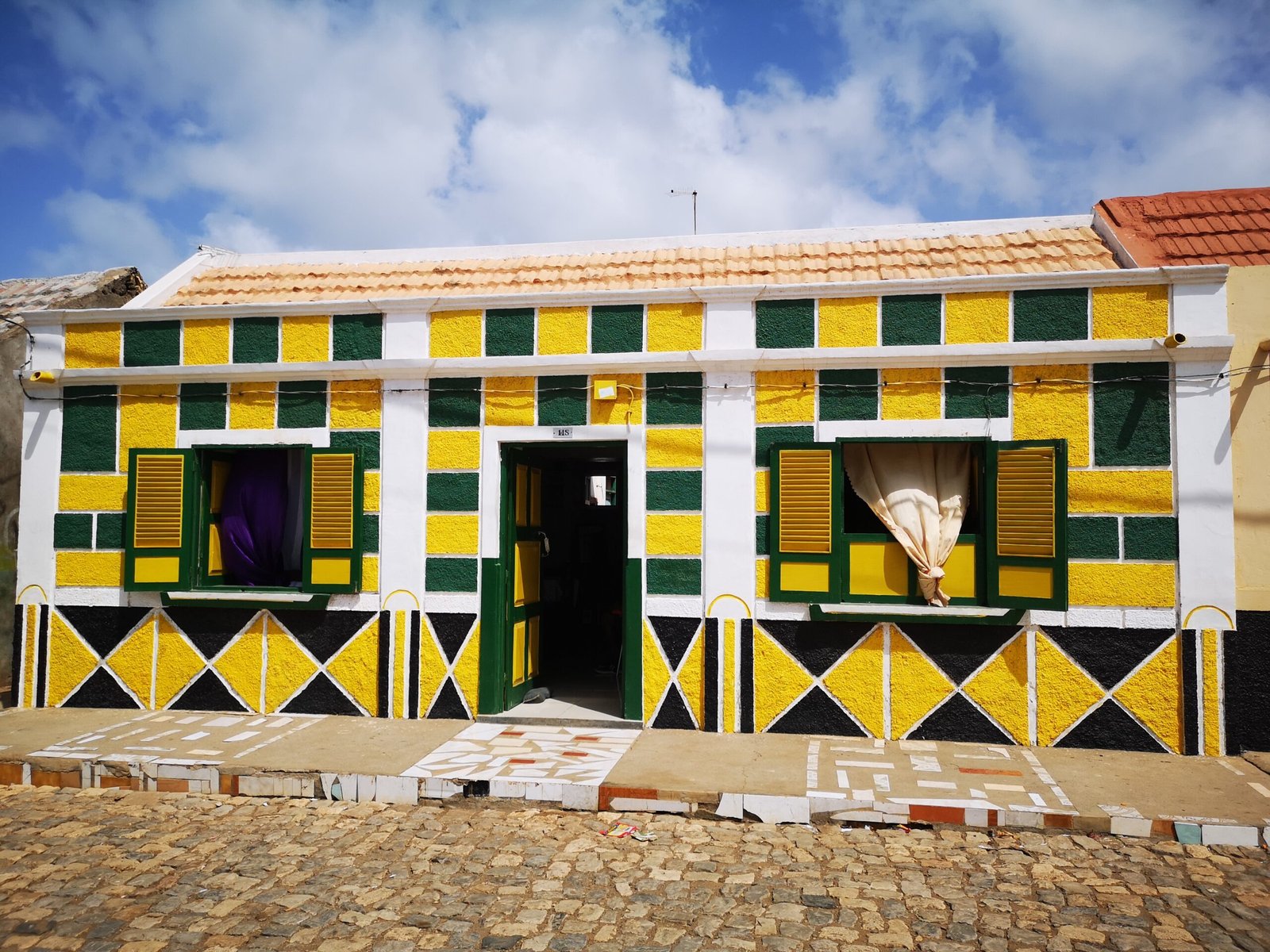
Maio Island is accessible from the country’s capital, Praia, in less than 30 minutes by plane or around 2 hours by boat.
3. Best island in Cape Verde for mountain tourism
The best island in Cape Verde for mountain hiking is, without a doubt, Santo Antão,not for nothing known as the island of the mountains.

Santo Antão offers amazing trails with varying levels of difficulty, giving you the chance to take in breathtaking scenery and idyllic villages. You can choose between shorter, easier hikes or longer trekking routes that can take days to complete.

Some of my favorite trails in Santo Antão are:
- Cova – Ribeira do Paul: Start the route early at Pico da Cruz, passing through the Cova crater and descending along the winding trails to Passagem. Once there, I suggest continuing down the Paúl Valley to the coastal town of Cidade das Pombas. The final part of this route can be done by car if you’re tired from the descent.
- Ponta de Sol – Cruzinha: This trail is longer but perfect for those who don’t mind walking. The full trail starts in the town of Ponta do Sol and passes through Fontainhas, Corvo, Formiguinhas, Aranhas, Cruzinha, and Chã de Igreja. The route is about 14.6 km long, and the average duration is six hours. Personal verdict: It’s worth every drop of sweat!
Santo Antão is only accessible by sea from the neighboring island of São Vicente. There are regular daily trips in both directions; the journey takes around 50-60 minutes.
An excellent alternative for mountain tourism in Cape Verde is the island of São Nicolau. A must-see is the Monte Gordo Natural Park, where at its peak you can witness the striking contrast between the lush northern side and the arid southern side, just metres apart. This peculiar disparity is due to different microclimatic zones in the region.

The uniqueness of São Nicolau's trails has recently been recognized, and for some years the island has hosted the annual "Meetup Trekking São Nicolau" event, where sports lovers have the opportunity to trek along little-explored routes.
São Nicolau is accessible by boat from São Vicente and Sal, or by plane from Santiago (Praia city).
Another great option for mountaineering in Cape Verde is the island of Brava,affectionately known as the island of flowers or the garden of the country.

With its milder climate, Brava is one of the greenest islands in the country. And despite being the smallest island in Cape Verde, Brava offers several spectacular trails with breathtaking views, where the greenery of the mountains wonderfully contrasts with the blue of the sea. We highly recommend the trail from Nossa Senhora do Monte to Fajã d’Água. Do it—you can thank us later!

Any of these islands is a great option for those who want to go beyond just sun and beach, and enjoy the fresh air and stunning mountain views of Cape Verde.
4. Best Cape Verde Island for Cultural Events
The best Cape Verde island for cultural events is definitely São Vicente.The city of Mindelo is considered by many to be the cultural capital of the country, and no wonder!
As the carnival song rightly said:"Soncent ê special; ka tem ot igual, pa bem ou pa mal" (free translation: São Vicente is unique; there’s no other like it, for better or worse.)
Mindelo hosts two of the country’s biggest cultural events annually: the vibrant and colourful Mindelo Carnival (in February/March) and the traditional Baía das Gatas Festival (in the summer). These events attract an increasing number of local and international tourists each year, creating an electric frenzy that takes over the whole island.
And because the people of São Vicente are naturally festive and creative, new cultural events are continually emerging on the island. These include, for example, the Festival da Cavala (Mackerel Festival) and the Summer Carnival, both equally vibrant events.
Mindelo also hosts the Mindelact International Theater Festival, bringing together artists from all over the world on Mindelo's stages.
Image: Porto Grande Bay, Mindelo, São Vicente island
São Vicente is the birthplace of great Cape Verdean musicians, including Cesária Évora (our late barefoot diva), Bana, Luis Morais and Tito Paris, among others. Musicality is very present on the island, and some restaurants and bars frequently offer live music.

Enjoy Mindel's nightlife when you visit the island. Don't miss the chance to enjoy a good dinner or drink to the sound of a good morna and coladeira. Or go out dancing until dawn and then head straight to the Dokas restaurant for a cachupa stew to cure your hangover (if you know, you know!).
São Vicente also has beaches for different tastes, including the classic Praia da Laginha in the heart of the city of Mindelo, Baía das Gatas (home to the music festival of the same name, one of the biggest in the country), São Pedro beach (ideal for water sports and snorkeling with turtles), among others.
Image: Sunset Praia da Laginha and Monte Cara, São Vicente island
5. Best Cape Verde island for typical flavors
Despite a common culinary base across the archipelago (including cachupa, goat cheese, fruit sweets, and seafood dishes) with small variations between the islands, each has its own typical and distinct flavours. Among them, the island of Fogo stands out for its uniqueness, making it the best island in Cape Verde to enjoy the finest local flavours. Fire, the best island in Cape Verde to enjoy the best of local flavors.
The uniqueness of Fogo's flavours is largely due to the island's volcanic activity, which gives the soil its fertility. The local cuisine mainly comes from what is grown there.

In Chã das Caldeiras, a unique village at the base of Pico do Fogo volcano, the mineral-rich soil allows the cultivation of peaches, melons, apples, pomegranates, quinces, figs, and especially grapes. Some of these fruits are only grown on Fogo island – I call them lava fruits.

The grapes are used to make wines, some of which are internationally renowned. Anyone visiting Cape Verde must not leave without trying a Manecon (red wine) or a Chã white (personal preferences).

Chã das Caldeiras also produces different types of beans, including the green congo. These are used, for example, in the preparation of Djagacida, the delicious traditional typical dish of the Fogo island.

Fogo's coffee is produced in Mosteiros and is proudly acclaimed by the locals for its quality. Other seasonal fruits on the island are also of excellent quality, such as mangoes and cashews.

The mushroom-shaped goat's cheese is distinctive to the island of Fogo.
If you really want to taste the best flavors of Cape Verde, you can't miss Fogo. The island is easily accessible from the capital Praia by sea and air.
6. Best Cape Verde island to escape the usual tourist destinations
The best Cape Verde islands to escape the beaten tourist paths are São Nicolau and Brava, tied.
São Nicolau is extremely underrated as a national tourist destination despite the variety of landscapes on the island. It is no surprise that two of Cape Verde's seven wonders are located on the island: Carbeirinho and Monte Gordo Natural Park.

The island's trails, still little explored, attract hiking enthusiasts to the annual Meetup Trekking São Nicolau. You can follow the event website for future editions.

A unique feature of São Nicolau is its beautiful beaches with both white and black sand. Although they are less known than the beaches of Sal and Boa Vista, they offer equally enjoyable moments! Also worth noting are the natural pools of Juncalinho and Carbeirinho, two of our favourite spots in the country!

The The island of Brava is also a well-kept and unexplored gem.Romantic by excellence, this island is coloured by flowers, with the red of the lilies reigning among the others. With its mild climate, the island is lush and fresh, ideal for leisurely walks.

The island is small, so it's easy to cover it all in just a few days. The many viewpoints scattered around Brava allow you to contemplate the local charms, as well as the neighboring islets and islands in the distance.

The town of Nova Sintra is distinctive and full of personality. It still preserves Portuguese colonial architecture that recalls the archipelago's not-too-distant past, and that gives it a certain charm.
One of our favorite places in the country is Fajã d' Água, a spectacular coastal area on the island of Brava. Set aside at least an afternoon to spend there. Allow your body to relax in the natural pools. And at the end of the day, sit down in one of the bars facing the sea, order a portion of fried moray eel or conch accompanied by a cold drink and wait for the sun to set. You won't regret it!

7. Best island in Cape Verde to isolate yourself from the world
The The best island in Cape Verde to isolate yourself from everything is undoubtedly Santa Luzia.That's because the island is uninhabited, completely deserted. With no mobile communication network or electricity, all you can do is enjoy the birds singing, rock to the sound of the waves breaking and sleep under the most starry sky in the country.
Image:

Santa Luzia is currently maintained as a nature reserve, important for its biodiversity. Access is reserved for fishermen and educational and nature conservation groups. However, it is possible to accompany the latter on specific excursions at certain times of the year. Bioesfera Cabo Verde is one of the groups that organises occasional trips to the island.
8. Best Cape Verde island to experience a bit of everything
Of course, the best Cape Verde island for those who want to experience a bit of everything is the island of Santiago.
Santiago is home to a huge historical heritage, rich in culture and traditions. The island is criss-crossed by beautiful valleys and mountains, bathed by warm beaches and crowned by dynamic urban areas. Diversity is the watchword on the island of Santiago, the largest in the archipelago.
For those who can't do without a good beach, Tarrafal is the place to be. Tarrafal is located on the northern tip of the island of Santiago, about two hours' drive from the capital. The drive to the town offers incredible scenic views of the whole island; we suggest going along the coast and returning inland, passing the historic Tarrafal Concentration Camp.

If hiking is a must for you, you'll find a good refuge in Santiago. Routes such as Sierra Malagueta – Principal, Assomada – Ribeira da Barca or the hike up to Rui Vaz are just a few of the many alternatives. The best time for hiking in Santiago is after the rainy season, mainly from September to November, when the island is covered in a green mantle of hope.

It's unthinkable to visit Santiago and not pass through Cidade Velha. Just a 20-minute drive from the capital, Cidade Velha (formerly Ribeira Grande) offers a window into the country's past, full of historical sites. It was the first city built by Europeans in the tropics, and the first capital of Cape Verde.
For its historical and cultural importance, the Old Town has been recognized by UNESCO as a World Heritage Site since 2009. Bonus: the sunset in the Old Town is spectacular!

And of course, make sure to explore the capital, Praia. Visit the bustling Municipal Market, the colourful Sucupira Market, the city’s small museums (the Praia Ethnographic Museum, the Archaeological Museum), the historic Plateau area, and end the day at a restaurant with live music.

Santiago has the country's main international airport (Nelson Mandela International Airport – RAI), and it receives international flights from various airlines. Additionally, Santiago is directly connected by air and sea to the other islands, making it easy to travel to the rest of the country from the capital.
Conclusion
In this article, we’ve explained in detail which island in the archipelago is best for each personal profile and travel purpose. Beaches, sunshine, mountains, green landscapes, deserts, culture… Cape Verde has something for everyone.
The following table is a summary guide to the article, illustrating the best that each island in Cape Verde has to offer.
| Island/ Activities | Santo Antão | São Vicente | Santa Luzia | São Nicolau | Sal | Boa Vista | Maio | Santiago | Fogo | Brava |
| Best white sand beaches | X | X | X | X | ||||||
| Best black sand beaches | X | X | ||||||||
| Water sports | X | X | X | |||||||
| Hiking/ trails | X | X | X | X | X | |||||
| Mountain Tourism | X | X | X | X | X | |||||
| Cultural events | X | X | ||||||||
| Evening entertainment | X | X | X | |||||||
| Lesser-known destinations ("off the beaten path") | X | X | X | X | ||||||
| History buffs | X | X | X | X | ||||||
| Tranquility | X | X | X | X | X | |||||
| Traditional Flavours | X | X | X | X |
If you have any further questions or if you would like more specific travel advice about Cape Verde, please get in touch with us.

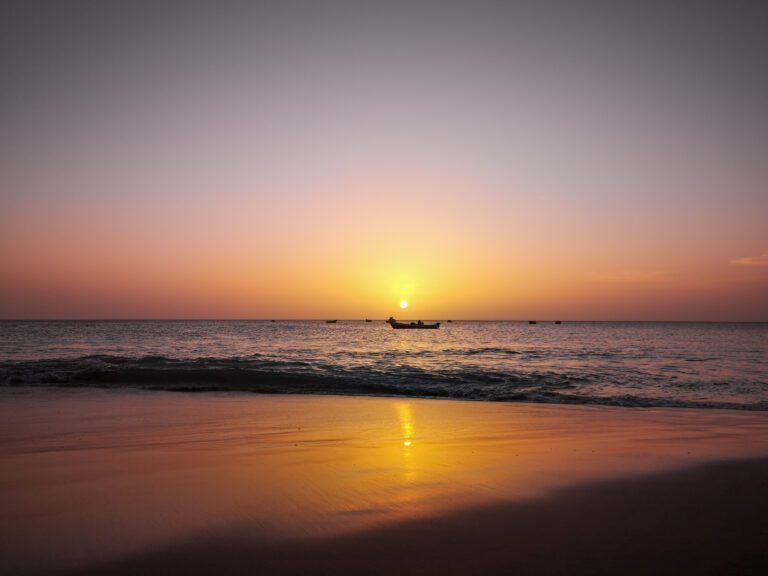
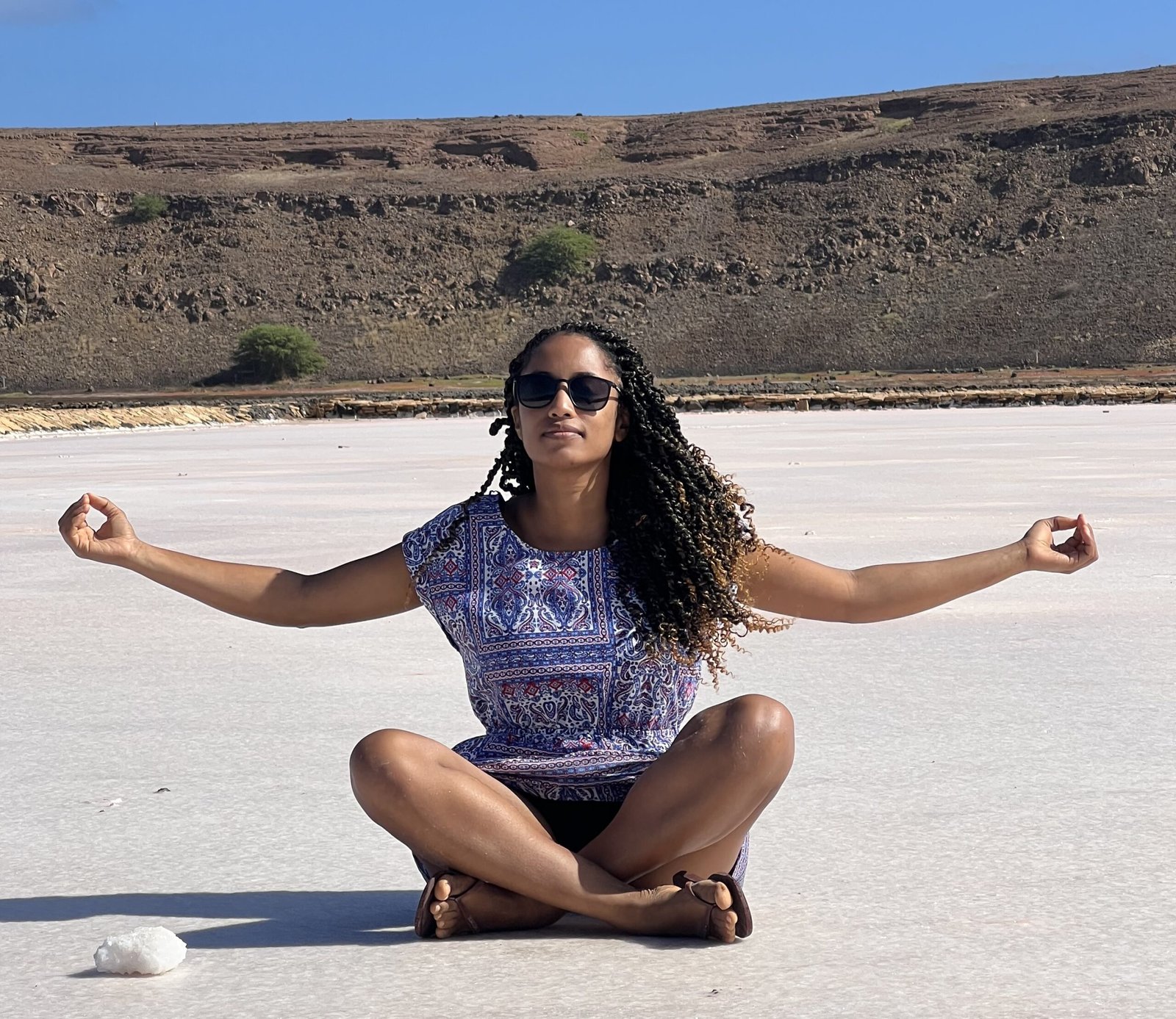
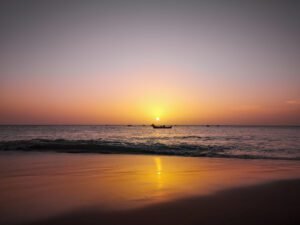
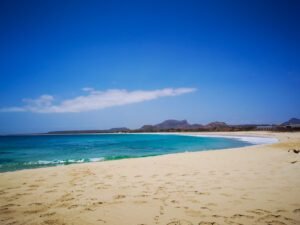
13 Responses
Excellent work. Congratulations.
I would suggest that you delve a little deeper into two topics that have so far been little explored, which are Cape Verde's gastronomy, which many think is only international (as each island offers at least one) and the natural cultural diversity of the islands. Thank you for the enriching sharing.
Thank you for your suggestion. Let's work on bringing more about this here on the site!
I'd like to know which island has the best gastronomy, natural and cultural diversity and is rich in handicrafts and markets. I'd also like to know which months are rain-free. Thank you for your attention and for making my choice easier.
On the subject of rain, it rains very little in Cape Verde. It usually tends to rain from August to October, with the heaviest rainfall usually in September. Although some people try to avoid visiting the islands during the rainy season, I particularly suggest considering at least the post-rainy season, which is when the country is green and there are natural watercourses (streams, small waterfalls) on some islands.
As for the other aspects you mentioned, each island has its own particularities, so it's difficult to choose one. However, I'll try to suggest two options:
1. Visit São Vicente e Santo Antão. São Vicente has beautiful beaches, diverse restaurants and is an extremely cultural island, with various events throughout the year - the carvanal in February and the Baia das Gatas festival in the summer fill the island (but if you prefer less crowded periods, avoid the ones I've mentioned). Santo Antão, on the other hand, is just 50 minutes away from São Vicente by boat, with regular daily boat connections in the morning and afternoon. Santo Antão is an island of mountains, simple and welcoming people. For those who like mountains, lush valleys and lots of natural beauty, this island is a must-see. The food on Santo Antão is very good too.
2. Visit Santiago e Fogo. Santiago is the island that houses the capital - Praia, so it offers options of traditional markets (e.g. Sucupira, Assomada market, etc.), good restaurants (the Quintal da Música restaurant is a must for those who like live music), rich in history (here you will find the first capital of Cape Verde - the "capital of the island of Santiago"). Old Townthe Tarrafal Concentration Camp Museum, which was used as a political prison during the dictatorship, and other emblematic sites). The island of Fogo, on the other hand, is a 20-minute plane ride from Santiago. Volcano. As we said in the article Fogo Island has a very typical cuisine due to what is grown on the island which is, in parts, very fertile as a result of the volcano. Fogo is rich in culture and history, and you'll feel out of touch with the present walking along the cobbled roads of São Filipe (or Vila, as the locals call it). If you like handicrafts, try visiting Chã das Caldeiras, the village at the foot of the volcano. Fogo Volcanowhere you can occasionally find craftsmen carving small shapes into the dry lava stones.
I hope you find these suggestions useful. We look forward to seeing you in Cape Verde!
Bonjour monsieur, vraiment je suis ravie, en plus quAllah vous bénisse richement. 🙏🇬🇳🇲🇦🇨🇩
Nous vous invitons chaleureusement à découvrir les îles du Cap-Vert.
Hello 🙂
I'm planning a one-week vacation in Cape Verde in June this year.
We want beaches but also culture, history, in short, a smell that goes beyond the resorts.
From what I read in this article, it seems that both St. Vincent and Santiago have this.
Since I have 1 week, I think it will be enough to visit 2 islands and I thought about doing Sal + São Vicente or Sal + Santiago or São Vicente + Santiago.
I'm actually more inclined to go to São Vicente, but the flights there from Lisbon are much more expensive.
Is it worth going to Sal or are the beaches of São Vicente / Santiago just as beautiful?
Do you have any suggestions for an itinerary?
Thank you so much!
Hello Maria! We're glad you're interested in Cape Verde!
The combination of islands will depend on your main objective. If the main objective is the beach, the island of Sal is the non-negotiable option among the islands you've suggested. However, if you also want to enjoy the culture and history, the all-inclusive packages offered by tour operators may not be the best option, because they often come with leisure options included and these may not meet what you are looking for. So consider a more free package, where you can choose which activities to do on the island of Sal.
Connectivity between Sal and São Vicente and Sal and Santiago is good. For history, I suggest Santiago Island. It has the Old Town which was the first site of European colonization in the tropics, has the Tarrafal Museum/Concentration Camp, the Amilcar Cabral Museum, the Praia Ethnographic Museum, etc. For culture, São Vicente would be the choice; in fact, São Vicente is considered by many to be the most cultural island. And this is due to its vibe, the way the people are, the musicality in the bars at night, and the whole atmosphere that makes the island delicious!
With this explanation, my suggestion if the main objective is resorts and beach is Sal + São Vicente or Santiago!
However, if you also like mountains and don't care for all-inclusive resorts (namely Sal), I'll leave you with another suggestion: Consider combining São Vicente and Santo Antão. Although São Vicente's beaches are smaller and less famous than Sal's, there are some great options, such as the Laginha urban beach (where you can see one of the best sunsets in the country). sunset on Mount Cara), Baía das Gatas beach, São Pedro beach (where you can swim with turtles), among others. Santo Antão is easily accessible by boat from São Vicente, with daily trips lasting around 60 minutes and at an affordable cost. You could, for example, spend two days in São Vicente sunbathing, followed by three days in Santo Antão, and then return for another two days in São Vicente.
In Santo AntãoYou can enjoy breathtaking trails, lush valleys and mountains and, not to lose focus of the beaches, you can visit Tarrafal de Monte Trigo beach, a long stretch of black sand, one of my favorite beaches in the archipelago. Here's a video from our instagram with images of Tarrafal de Monte Trigo and one of the the island's valleys and mountains.
Have a good trip and get in touch if you need any more information.
We are on the island of May a little lower in value and so it has everything
Paysages eau cristalline randonnees biodiversite musique gastronomie culturelle .nous adorons notre petite ile et nous proposons des decouvertes de plages de la vraie avec notre employe et des repasts servis a domicile ainsi que la musique chez nous mon site http://www.Vila-maio.com
I would like to congratulate you on the excellent content that can be found here.
Soon we'll get to know this country, which I think is fantastic.
However, we are not interested in resorts (although I have nothing against those who use them).
I want to get to know the daily life of the Cape Verdean people, visit the markets, try to get to know the people in a natural way. I think I'll have to find someone to guide me (with good knowledge). I'm going to Praia, precisely because I think it's the best place for that.
I think I'll be able to find someone who can help me in this regard (to get to know the reality of people's daily lives in Cape Verde).
Thanks again for the valuable information.
Hello Mário. We're glad the site has been useful to you. We hope you can get to know and feel the Cape Verde that goes beyond the resorts. Go with an open heart. ~It's great to experience the day-to-day life of a Cape Verdean and understand what makes us who we are and why we love our land so much, despite the many challenges we still face as a developing country. Have a good trip!
Well, we're thinking of going to the Salt Island for a week at the end of August and sometime in September, but we're worried about whether the rain is too much on those days or whether it's just a shower and the sun comes out again.
It's nice to have a Cape Verdean person explain the best of the area to us. I love your page
Hello, I'm glad you liked the page.
For those who specifically want to explore the beaches, this season is a bit risky. It's difficult to predict what the weather will be like. There are rainy periods when only a few drops fall and then the sun comes out again. But there are others in which it can rain all day and be sunny the next day. If your aim is simply to enjoy the sun and the beach, consider another date if possible.
Despite the tendency to rain during this season, it is one of my favorites for hiking because the fields and hills are green. However, the islands closest to Sal for hiking and enjoying nature would be São Nicolau and Santo Antão, if you like this option.
In any case, don't stop visiting the archipelago.